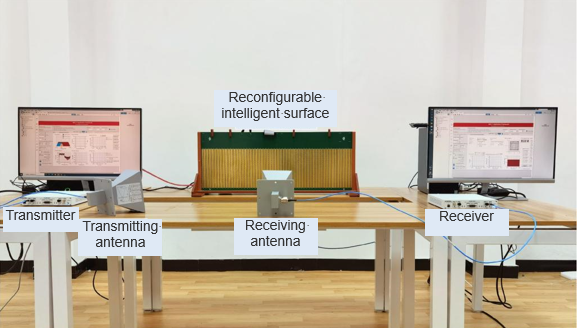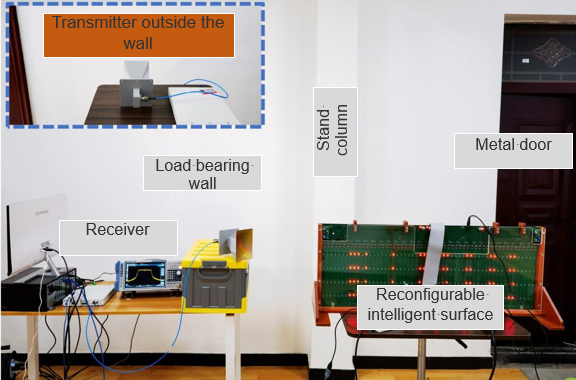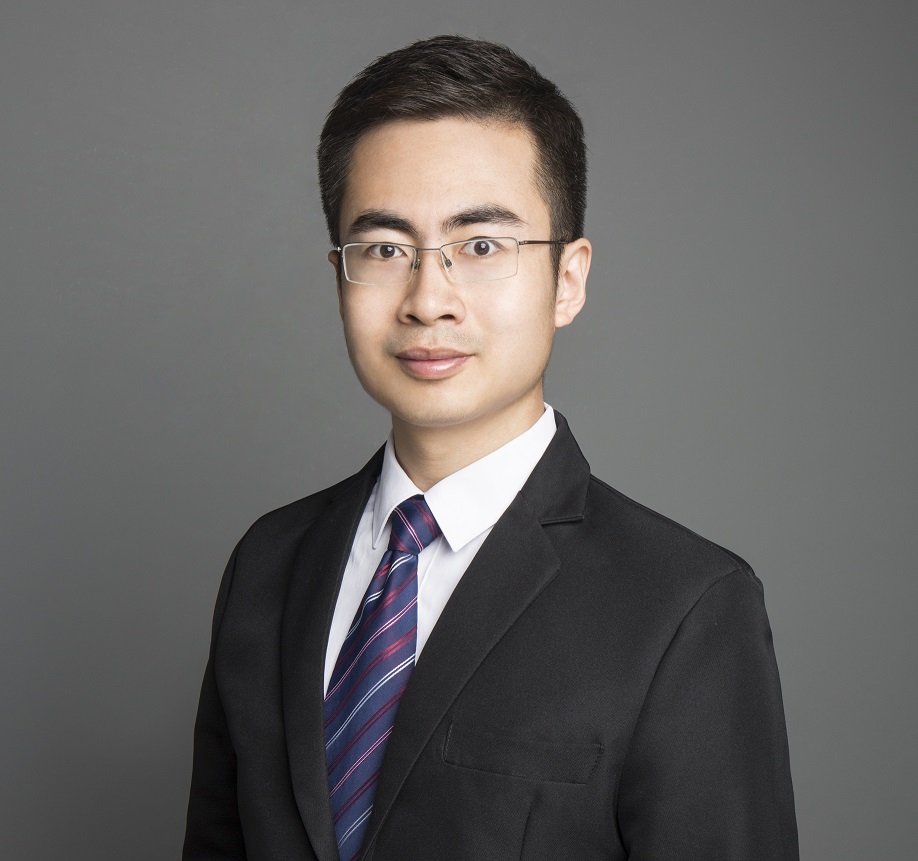Recently, the reconfigurable intelligent surface wireless communication prototype system developed independently by the R & D team under the leadership of Professor Yin haifan from the School of Electronic Information and Communications has broken the performance record of this industry, which amplifies received signals by a magnification of 500 without changing the power for transmitting signals according to actual measured data. The team has completed the experiment in outdoor distant signal transmission by employing the first reconfigurable intelligent surface of this industry, during which its signal-amplifying function was taken advantage of to offset the loss caused by the distant transmission of electromagnetic waves, enabling the real-time broadcasting of the high-definition video streaming sent from 500 m away.
With the continuous development of mobile communications, the working frequency of the communication system is becoming higher and higher due to the rarity of wireless spectrum resources, and, therefore, the problems of being difficult to access wireless network and consuming much energy are becoming more and more prominent, constraining the mobile communication industry. With the reconfigurable intelligent surface, a completely new wireless communication enhancement technology, the two major pain points are expected to be solved. This technology, regarded as a cutting-edge interdisciplinary branch of learning, combines artificial electromagnetic metamaterial technology and modern mobile communication technology. The reflection phase/amplitude of the elctromagnetic elements on the reconfigurable intelligent surface can be regulated and controlled in real time through software to realize the intelligent control of incident electromagnetic waves in a coordinated way and send wireless signals in predetermined direction to user terminals. The application of this technology can remarkably improve signal quality and communication reliability, enable signals to reach dead zones in the network and reduce energy consumption of the communication network. Meanwhile, this technology is expected to be one of key technologies for 5G+/6G as well as a hot spot for research triggering harsh international competition due to its features of low costs, low power consumption and easy deployment. All the scientists from China, the U.S., Europe, Japan, South Korea, Singapore and other countries and regions are accelerating the distribution and exploration of this new technology.
The scientific research team under the leadership of Professor Yin Haifan has solved trickle problems with the design and manufacture of artificial electromagnetic metamaterials, the design and debugging of high-frequency electronic circuits, the development of the software defined radio system, etc. one after another and proposed a less complicated self-adaption beam forming technology based on the feature of a sparse wireless channel structure, with which reflected wave beams can be accurately transmitted to the receiving antenna to improve the quality of received signals. The team was the first in this industry to finish the outdoor distant test on the reconfigurable intelligent surface technology, realizing a 500-fold gain in signal strength and breaking the record of a 150-fold gain kept by the research team from Tsinghua University.
Team |
Massachusetts Institute of Technology |
Tsinghua University |
Huazhong University of Science and Technology |
Gain in signal power |
10.5-fold |
150-fold |
500-fold |

The picture shows the reconfigurable intelligent surface-based wireless communication prototype system developed by the team.

The picture shows the scene of a field experiment.
The team transmitted a 1080p high-definition video from Liangsheng Building in Qiming College of our university to the former National Photoelectricity Research Center 500 m away, realizing the sharp rise of the signal power at the receiving end on the strength of the reconfigurable intelligent surface, which allows the online broadcasting of video streaming.

The picture shows the testing scene of signals going through the wall.
In the test of signals passing through the wall, the reconfigurable intelligent surface also had a 400-fold gain in signal power, which compensated the signal loss caused by going through the wall to a great degree and hence guaranteed communication quality. These field test results indicate that the reconfigurable intelligent surface is supposed to be a key technology to solve the pain point in network coverage and the pain point of high power consumption with 5G and future communications.
At present, the team has submitted applications for seven related national invention patents with four already officially authorized. The members participating in the development of this system also include Lecturer Tan Li and five students: Pei Xilong, Cao Lin, Li Zhanpeng, Wang Kai and Zhang Kun.

Yin Haifan, now a national-level senior expert introduced into the School of Electronic Information and Communications, HUST from overseas, once acted as a senior engineer engaging in advance research in Huawei and took part in the formulation of the international standard for 5G communications. Yin Haifan has been long undertaking the research into wireless communications and multi-antenna technology, solving multiple pain points and tricky problems with the key technology concerning 5G - MassiveMIMO, making great contributions to the commercialization of 5G.
Source: School of Electronic Information and Communications
